
Victor August Herbert was an American composer, cellist and conductor of English and Irish ancestry and German training. Although Herbert enjoyed important careers as a cello soloist and conductor, he is best known for composing many successful operettas that premiered on Broadway from the 1890s to World War I. He was also prominent among the Tin Pan Alley composers and was later a founder of the American Society of Composers, Authors, and Publishers (ASCAP). A prolific composer, Herbert produced two operas, a cantata, 43 operettas, incidental music to 10 plays, 31 compositions for orchestra, nine band compositions, nine cello compositions, five violin compositions with piano or orchestra, 22 piano compositions and numerous songs, choral compositions and orchestrations of works by other composers, among other music.

Artur Rodziński was a Polish-American conductor of orchestral music and opera. He began his career after World War I in Poland, where he was discovered by Leopold Stokowski, who invited him to be his assistant with the Philadelphia Orchestra. This engagement led to Rodziński becoming music director of the Los Angeles Philharmonic, Cleveland Orchestra, New York Philharmonic, and the Chicago Symphony Orchestra. He also prepared the NBC Symphony Orchestra for Arturo Toscanini before the Italian conductor's debut with them. A dispute in Chicago led to Rodziński's dismissal in 1948, whereupon he shifted his career to Europe, eventually settling in Italy, although continuing to maintain a home in Lake Placid, New York. In November 1958, beset by heart disease, he made his professional return to the United States for the first time in a decade, conducting acclaimed performances of Richard Wagner's Tristan und Isolde with the Lyric Opera of Chicago. Exhausted, he checked into Massachusetts General Hospital where he died 11 days later.
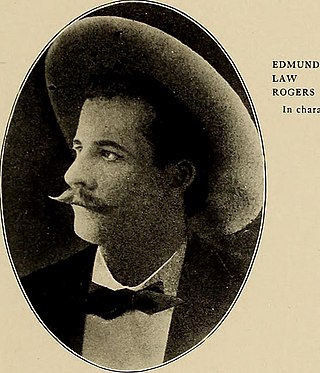
Edmund Law Rogers, also known by the stage name Leslie Edmunds, was an American stage actor. He was also a founding father of the Kappa Sigma fraternity at the University of Virginia.
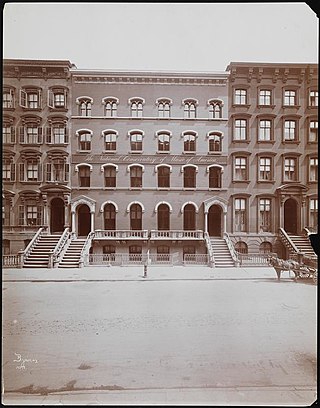
The National Conservatory of Music of America was an institution for higher education in music founded in 1885 in New York City by Jeannette Meyers Thurber. The conservatory was officially declared defunct by the state of New York in 1952, although for all practical pedagogical purposes, it had ceased to function much earlier than that. Between its founding and about 1920, however, the conservatory played an important part in the education and training of musicians in the United States, and for decades Thurber attempted to turn it into a federally-supported national conservatory in a European style. A number of prominent names are associated with the institution, including that of Victor Herbert and Antonín Dvořák, director of the conservatory from Sep. 27, 1892 to 1895.

Max Bendix was an American concert violinist, conductor, and teacher. He was the first concertmaster of the Chicago Symphony Orchestra and was also the concertmaster of the Metropolitan Opera orchestra. Bendix wrote several works for orchestra and some incidental music as well as songs. In 1899, the Musical Courier called Bendix "the finest American violinist".

Wassili Leps was a Russian-born American composer and conductor.

Mary McCormic was an American operatic soprano and a professor of opera at the University of North Texas College of Music (1945–1960).
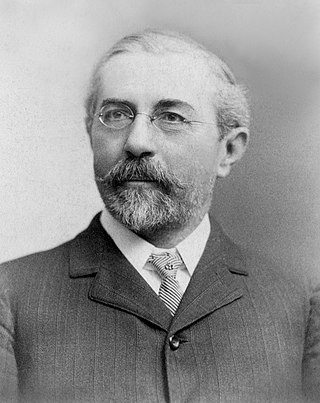
Gustav Ludwig Wilhelm Hinrichs was a German-born American conductor and composer. He immigrated to the United States at the age of 19, where he became known especially as a conductor of opera in San Francisco, New York, and Philadelphia. His compositions include four operas, many songs and instrumental works, and musical scores for silent films, including the 1925 version of The Phantom of the Opera.

Martha Atwood was an American operatic soprano and the founder of the Cape Cod Institute of Music. She was awarded the Medal of Honor from the National Society of New England Women.
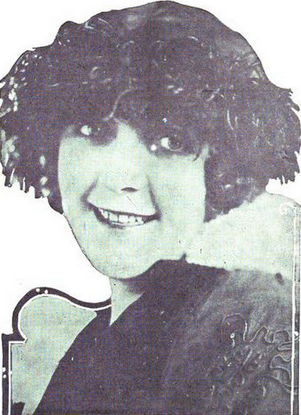
Ina Bourskaya was a Ukrainian-born American opera singer.

George Hamlin was an American tenor, prominent on the concert stage as a lieder and oratorio singer and later in the opera house when he sang leading tenor roles with the Philadelphia-Chicago Grand Opera Company. He also recorded extensively on the Victor label.
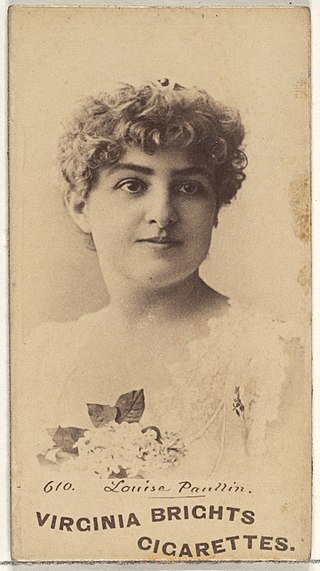
Louise Paullin, sometimes seen as Louisa Paullin, was an American stage actress.

Anne Roselle was an American operatic dramatic soprano.
Ethel Barrymore Colt was an American actress and producer and a soprano who sang in more than 100 concerts in the United States, Canada, and South America. She was a member of the ninth generation of the Barrymore acting family. Her obituary in The Washington Post described her as "a versatile and talented singer, actress and producer, playing dramatic roles on Broadway and in summer stock and singing in grand opera, operetta, musical comedy and on the concert stage."

Jean Tennyson, also known by her married names Jean Tennyson Dreyfus and Jean Tennyson Boissevain, was an American soprano, musical theatre actress, philanthropist, and radio personality. She began her career performing in musicals and cabaret shows in Chicago; making her stage debut in 1919. She made her Broadway debut in the chorus of Albert Von Tilzer's 1923 musical Adrienne; ultimately taking over the title role four months into the shows run and performing that part on tour in 1924. After starring in the Broadway musical revue The Earl Carroll Vanities in 1928 and 1929, her career shifted towards opera and work as a concert soprano. She was a leading soprano in operas and concerts internationally from the 1930s through the 1940s, performing on the stages of opera houses like La Scala, La Fenice, the Vienna Volksoper, the Chicago Civic Opera and the San Francisco Opera.
Istvan Balla, better known by the names Stefano Ballarini, Stephen Ballarini, and Stephan Ballarini was a Hungarian-born American baritone. A native of Budapest, he was trained in Germany and made his stage debut at the Oper Breslau in 1925. He had a career at opera houses in Europe for the next eleven years, performing leading roles at La Scala, the Berlin State Opera, and the Vienna State Opera among other places. He made multiple appearances at the Teatro Colón from 1931-1934. He relocated to the United States where he made his American debut at the Chicago City Opera Company in October 1936. After marrying an American woman in 1938, he became a naturalized American citizen in 1939. He performed with multiple opera companies in Philadelphia during the 1930s and 1940s, and was a regular performer with the San Carlo Opera Company from 1938-1949. On Broadway he portrayed Mr. Martini in the world premiere of Walter Damrosch's The Opera Cloak in 1942 at the Broadway Theatre. He also sang in concerts with American orchestras, including performances with the New York Philharmonic and the Philadelphia Orchestra. His final appearance was at the New York City Opera in 1952. His voice is preserved on several recordings made during the late 1920s and early 1930s on various record labels in France, Italy, and Germany.

Joan Ruth was an American soprano and stage actress. A native of Massachusetts, she studied singing at the New England Conservatory and with Estelle Liebling in New York City. She had an active stage career in operas, concerts, and musicals from the early 1920s into the mid 1940s. She made her professional opera debut with the Wagnerian Opera Company in 1923. She sang two seasons with the Metropolitan Opera, and also performed roles with other American opera companies like the Cincinnati Opera and the St. Louis Municipal Opera. In 1926 she toured throughout the United States in concert with the tenor Edward Johnson. In 1927 she created the role of Sally Negly in the original Broadway production of Sigmund Romberg's My Maryland. She starred in the 1929 Warner Bros. short film Guido Ciccolini and Eric Zardo. She was also active as a singer on American radio stations in New York City.
Annunciata Garrotto, also known by her married name Annunciata Power, was an American soprano who had an active international career in operas from the early 1930s into the 1950s. A native of Omaha, Nebraska, she studied music at the University of Nebraska Omaha before pursuing further studies in Milan with soprano Lina de Benedetto and in New York City with Estelle Liebling. After making her opera debut in Italy, she toured Europe and Asia with the company of the Teatro di San Carlo in the early 1930s. Also performing in this tour was the tenor Laurence Power who she later married in 1935. The couple would work together frequently as romantic leads in operas during their performance careers.
Barbara Thorne, also known by her married name Barbara Stevenson and as Barbara Thorne Stevenson, was an American soprano who had an active performance career from 1930 through 1959. She made her professional singing debut in 1930 as a soloist with the Portland Symphony Orchestra while an undergraduate music student at Pacific University. She performed in several more oratorios with that orchestra in the 1930s. She continued to perform professionally while pursuing further vocal studies at the Curtis Institute of Music in Philadelphia from 1935-1938 where she was a pupil of Harriet van Emden and Estelle Liebling. She was a leading soprano of the Philadelphia Opera Company from 1939-1942, and also performed with other American opera companies during the 1940s and 1950s. She also worked as an oratorio soloist, mainly in the cities of Philadelphia and New York City, but also on stages throughout the United States. In 1939 she recorded Wolfgang Amadeus Mozart's Requiem with the Philadelphia Orchestra for RCA Victor. In the 1950s she taught on the voice faculties of the University of North Texas and Southern Methodist University.
Josepha Chekova, sometimes given as Josefa Chekova and also known by her married name Josepha Domansky, was a Czech-American soprano. She began her career in vaudeville as early as 1924, and was a contracted singer with WRNY radio in 1926-1927. After appearing in a musical revue in Chicago, she won a vocal competition in 1927 which provided her with a scholarship to train as an opera singer at the Bel Canto Studio, Inc. of New York. She later studied singing further in New York City with Estelle Liebling. She made her opera debut at the Prague State Opera prior to becoming a leading soprano with the New York Opera Company in 1933. She was a leading soprano at Radio City Music Hall in 1930s, and toured with the San Carlo Opera Company in 1935-1936. She worked regularly with the Steel Pier Opera Company in Atlantic City from the mid 1930s into the early 1940s, and also appeared as a guest artist with opera companies in Washington D.C., Cincinnati, and Chicago. From 1940-1942 she toured with Armand Bagarozy's Columbia Opera Company, and in 1948 she gave a concert tour of Czechoslovakia.















